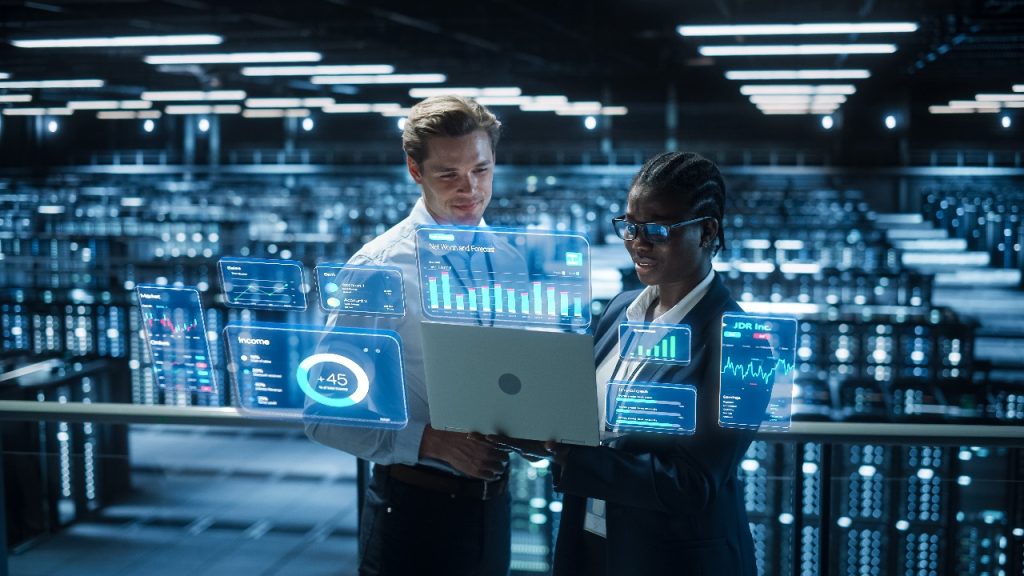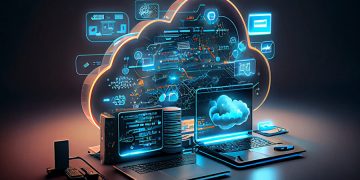Introduction: The Paradox of Progress
As the digital age accelerates, computing power has emerged as the new fuel of civilization — driving artificial intelligence, automation, and every layer of global connectivity. Yet behind the dazzling capabilities of supercomputers and AI lies a hidden cost: energy.
Every line of code consumes electricity; every data center hums with servers that generate heat. The more intelligent our machines become, the more energy they demand. This creates a paradox — the very power that propels our technological evolution threatens to strain the planet that sustains it.
In this new era, the intersection between computing power and sustainability is not just a technical issue but a moral and strategic one. The question is no longer whether we can compute more, but whether we can compute wisely.
1. The Energy Cost of Intelligence
1.1 From Microchips to Megawatts
Computing power has grown exponentially over the past decades, but so has its energy footprint.
Today’s high-performance computers operate at scales that consume millions of kilowatt-hours annually.
According to the International Energy Agency (IEA), global data centers already consume about 2% of the world’s electricity, and this number could triple by 2030 if growth continues unchecked.
Each query to an advanced AI model like ChatGPT, for instance, requires thousands of GPU operations — powered by energy-hungry hardware and cooled by massive air or liquid systems. The result is an unseen energy ecosystem beneath the digital surface, as vital to modern civilization as transportation or industry once were.
1.2 The AI Energy Explosion
Artificial intelligence is the most energy-intensive frontier in computing.
Training a large language model can consume as much electricity as 100 U.S. households use in a year, and generate several hundred tons of CO₂ emissions.
AI workloads are expected to account for up to 10% of total data center demand by 2030, driven by the increasing complexity of neural networks and the proliferation of edge AI devices.
The irony is stark: the smarter our machines become, the hungrier they get for power.
2. The Rise of Green Computing
2.1 Rethinking Efficiency
Green computing — or sustainable computing — aims to reduce the environmental footprint of information technology.
It combines advances in hardware design, energy-efficient algorithms, and renewable energy integration to ensure that digital progress does not come at the expense of planetary health.
Data center efficiency is often measured by a metric called Power Usage Effectiveness (PUE) — the ratio of total facility energy consumption to computing energy consumption. The ideal value is 1.0, meaning every watt goes directly to computation.
In 2025, leading operators like Google and Microsoft have achieved PUE values as low as 1.1, using advanced cooling systems and AI-driven energy management.
2.2 Cooling the Cloud
Cooling accounts for nearly 40% of a data center’s total energy use. Traditional air cooling systems are inefficient and require vast amounts of water.
To address this, engineers are deploying liquid immersion cooling, where servers are submerged in dielectric fluids that dissipate heat more effectively.
Others are experimenting with underwater data centers and arctic installations — using natural environmental conditions to reduce cooling demand.
2.3 Software Efficiency: Thinking Smarter, Not Harder
Hardware isn’t the only culprit. Software inefficiency wastes enormous energy.
AI researchers now emphasize energy-aware algorithms — optimizing computations, compressing models, and reducing redundant training cycles.
For instance, pruning large neural networks or using federated learning (where data stays decentralized) can cut energy consumption by 30–50% without sacrificing accuracy.
3. Powering the Cloud with Clean Energy
3.1 Renewable Integration
The transition to clean energy is the foundation of sustainable computing.
Major tech companies are investing heavily in solar, wind, hydro, and nuclear power to fuel their data centers.
Google claims to operate on 100% renewable energy, while Microsoft aims to be carbon-negative by 2030, removing more CO₂ than it emits.
China, through its “East Data, West Computing” (东数西算) initiative, is also shifting data centers toward renewable-rich western regions, reducing carbon emissions while balancing national computing resources.
3.2 Smart Grids and AI in Energy Management
AI is not only a consumer of energy — it’s also becoming a manager of it.
Machine learning algorithms are now used to optimize power distribution in real time, predict energy demand, and reduce waste in smart grids.
By merging AI with renewable energy systems, nations can build self-regulating digital infrastructures that minimize both cost and carbon output.
3.3 The Rise of Micro Data Centers
Rather than centralizing all computation in massive facilities, micro data centers — small, localized computing hubs — can bring computation closer to users.
This reduces latency, saves energy on data transmission, and allows local use of renewable power sources.
This distributed model, coupled with edge computing, represents a more sustainable architecture for future networks.
4. Beyond Silicon: New Paradigms for Sustainable Computing
4.1 Quantum Computing and Efficiency
Quantum computers, still in experimental stages, have the potential to solve complex problems using exponentially less energy than classical machines.
By exploiting quantum superposition, they can perform calculations simultaneously, potentially making certain algorithms millions of times more efficient.
Although not yet energy neutral, quantum architectures promise to shift the relationship between computation and consumption.
4.2 Neuromorphic and Bio-Inspired Computing
Nature has long been the most energy-efficient computer. The human brain operates on 20 watts — less than a household lightbulb — yet outperforms supercomputers in perception and adaptation.
Neuromorphic computing seeks to mimic this efficiency by building chips that replicate neural and synaptic behavior.
These chips process information asynchronously, using event-driven logic, drastically reducing energy consumption compared to traditional architectures.
4.3 Photonic Computing: Light as a Processor
Photonic computing replaces electrons with photons — particles of light — to transmit and process information.
Since photons travel faster and generate less heat, this approach can reduce power usage while dramatically increasing speed.
Startups and research labs worldwide are developing optical AI accelerators that could redefine the future of green computation.

5. The Economics of Sustainable Computing
5.1 Cost vs. Responsibility
Sustainability is not only an environmental choice but an economic one.
Energy costs already represent 30–50% of total data center operating expenses. As electricity prices rise and carbon taxes expand, energy efficiency becomes a competitive advantage.
Green computing is thus evolving from a moral imperative into a business necessity.
5.2 The Circular Computing Model
Circular computing aims to extend the lifecycle of hardware through recycling, refurbishment, and modular design.
Each server component can be reused or upgraded rather than discarded, reducing electronic waste and resource extraction.
The United Nations projects that e-waste will reach 75 million tons annually by 2030, making circular design a crucial part of the sustainability equation.
5.3 Carbon Accounting and Transparency
Companies are now adopting carbon accounting frameworks to measure and disclose emissions from their digital infrastructure.
Initiatives like the Green Software Foundation promote open standards to track the environmental cost of computation, allowing consumers and investors to hold organizations accountable for their digital footprints.
6. Policy, Governance, and the Global Compute Divide
6.1 A New Policy Frontier
Governments are recognizing that computing power is not just a technological resource but an environmental responsibility.
The European Union’s Green Digital Coalition sets standards for carbon-neutral computing, while China and the U.S. are implementing national strategies for green data infrastructure.
6.2 The Compute Divide
However, not all nations or companies have equal access to clean computing.
Developed economies are racing ahead with renewable-powered AI ecosystems, while developing countries risk being locked into carbon-intensive systems due to lack of investment.
Bridging this compute divide requires international collaboration — transferring technology, funding green infrastructure, and building shared compute resources.
6.3 Toward a Global “Compute Charter”
Some experts advocate for a Global Compute Charter, establishing shared principles for responsible, sustainable use of computational power.
Such a framework would guide AI development, cloud operations, and digital trade toward environmental stewardship and equitable access.
7. Ethical Reflections: Computing for a Living Planet
Computation is no longer just a technical act — it is a moral one.
Every AI model, every simulation, every digital decision carries an ecological weight.
The concept of digital ethics must expand beyond bias and privacy to include ecological responsibility.
If intelligence is defined as the ability to make decisions, then true artificial intelligence must also learn to make sustainable ones.
The integration of AI and green energy offers a profound opportunity: to create not only smarter machines, but a wiser civilization.
Conclusion: Toward a Sustainable Intelligence
The evolution of computing power has mirrored humanity’s own story — ambitious, transformative, and often blind to its consequences. But as we reach the limits of both silicon and the planet’s tolerance, we face a choice: continue accelerating without direction, or redesign intelligence itself to coexist with life on Earth.
Sustainable computing is not merely about efficiency; it is about harmony — aligning our digital ambitions with the rhythms of the natural world.
The true measure of progress will not be in teraflops or model sizes, but in how gracefully intelligence and energy can coexist.
The future of computing will belong not to those who compute the most, but to those who compute responsibly.












































